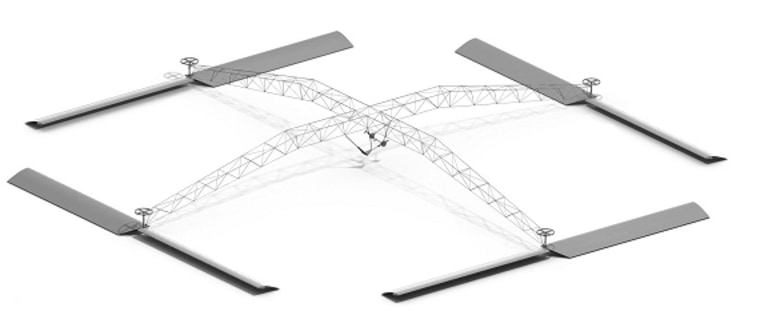On Wednesday, Judy Wexler will pedal furiously, hoping to generate the force needed to lift a human-powered helicopter off the ground and win a $250,000 prize.
The biology student at the University of Maryland is a competitive cyclist with a desirable power-to-weight ratio and endurance, noted Brandon Bush, a graduate student in the university's school of engineering and project team member.
The X-shaped helicopter, called Gamera, has 42-foot diameter rotors at each end of 60-foot long crossbars. A pilot's module is suspended from the middle.
Wexler will be pedaling with her feet and hands, hoping to generate enough lift to get off the ground. "We want to take advantage of every single piece of power we can get out of our pilot," Bush told me Monday.
The structure is made of balsa, foam, Mylar, carbon fiber and other lightweight materials and weighs about 100 pounds, about the same weight as Wexler.
If the helicopter stays aloft for at least 60 seconds and reaches a height of 10 feet, the team will capture the $250,000 Sikorsky Prize, an X-prize like contest for human-powered helicopters.
Bush said winning the prize isn't in their crosshairs for the Wednesday test flight, rather just getting the craft and pilot off the ground for a minute, which will require sustaining nearly 1 horsepower of power for the duration.
"Humans have this tendency to put out a lot of power at the beginning and then their ability to sustain that power rapidly drops off with time," he noted.
Wexler, they hope, can keep the pace up for a full minute, but reaching an altitude of 10 feet is another challenge that will likely require some redesigning based on results from the test flights.
"We have a lot of ideas that should be able to get us there, for instance taking advantage of that initial spike in energy that humans have and maybe hop up to [10 feet] and then float down over the 60 seconds for the hover," he said.
The University of Maryland will live stream Wednesday's test between 9 a.m. and 12 a.m. ET. Click here to check it out.
John Roach is a contributing writer for msnbc.com. Connect with the Cosmic Log community by hitting the "like" button on the Cosmic Log Facebook page or following msnbc.com's science editor, Alan Boyle, on Twitter (@b0yle).
